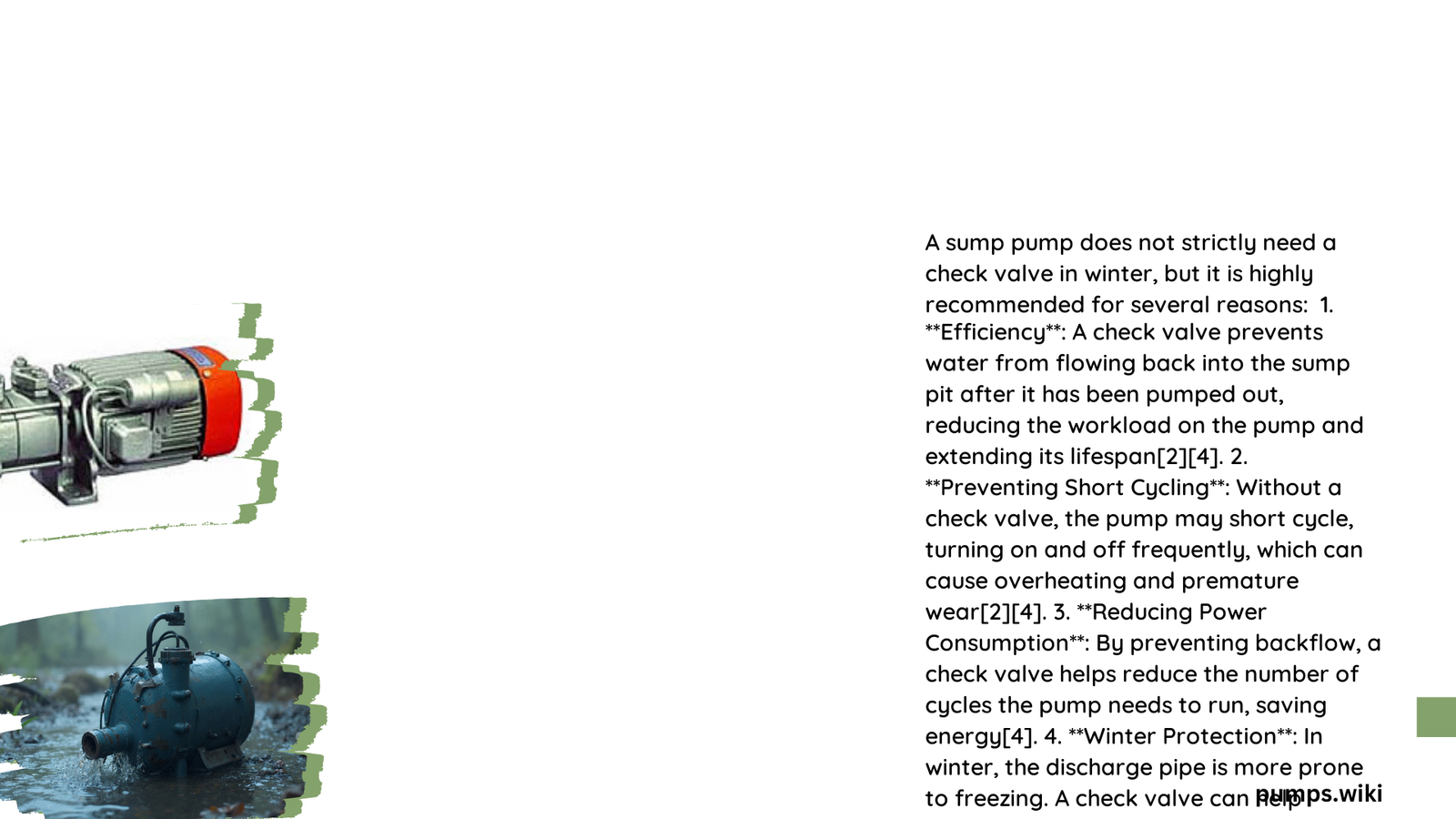Winter presents unique challenges for sump pump systems, making the installation of a check valve not just beneficial, but critical. Homeowners often overlook this small yet powerful component that prevents water backflow, protects pump mechanisms, and ensures reliable drainage during freezing temperatures and potential power disruptions. Understanding the role of a check valve can save significant repair costs and prevent basement flooding.
Why Do Sump Pumps Require Check Valves in Winter?
What Happens Without a Check Valve?
Without a proper check valve, water can easily flow back into the sump pit after pumping, creating several potential problems:
- Increased pump cycling
- Higher energy consumption
- Premature mechanical wear
- Risk of freezing and system failure
How Does a Check Valve Protect Your Sump Pump?
A check valve acts as a one-way gate, preventing water from returning to the sump pit after being pumped out. This mechanism becomes especially crucial during winter when:
- Ground water levels fluctuate
- Freezing temperatures create additional system stress
- Power outages might interrupt normal pump operations
| Winter Sump Pump Challenge | Check Valve Solution |
|---|---|
| Water Backflow | Prevents reverse water movement |
| Increased Mechanical Stress | Reduces pump cycling |
| Potential Freezing | Maintains system integrity |
Where Should Check Valves Be Installed?

What Is the Ideal Check Valve Placement?
Experts recommend installing check valves:
– 8-12 inches above the pump’s discharge point
– In easily accessible locations
– With consideration for potential air lock prevention
What Types of Check Valves Work Best?
Which Check Valve Design Offers Maximum Protection?
Several check valve designs are suitable for winter conditions:
- Swing-type valves
- Flapper valves
- ABS check valves with 15° seat angles
- Polyethylene pipe compatible models
How to Maintain Sump Pump Check Valves in Winter?
What Winterization Steps Protect Your System?
Winter maintenance involves:
– Disconnecting exterior discharge hoses
– Cleaning sump pit thoroughly
– Closing crawl space vents
– Installing freeze guards
– Checking valve functionality periodically
What Are Potential Winter Risks?
Can Frozen Pipes Compromise Check Valve Performance?
Winter risks include:
– Discharge pipe freezing
– Reduced water flow
– Potential system blockages
– Increased mechanical strain
Professional Recommendations
What Do Experts Suggest?
Professional plumbers recommend:
– Annual check valve inspections
– Using insulated discharge pipes
– Installing backup sump pump systems
– Monitoring water levels during winter months
Technical Considerations
How Do Temperature Variations Impact Check Valves?
Temperature fluctuations can:
– Cause material contraction
– Create potential seal vulnerabilities
– Increase mechanical stress on valve components
Cost-Benefit Analysis
Is Investing in a Check Valve Worth It?
Consider these financial perspectives:
– Check valve cost: $20-$50
– Potential flood damage: $10,000-$50,000
– Pump replacement: $500-$1,000
Conclusion
A check valve is not just recommended but essential for sump pump systems during winter. By preventing water backflow, reducing mechanical stress, and maintaining system integrity, check valves provide critical protection against potential water damage.
